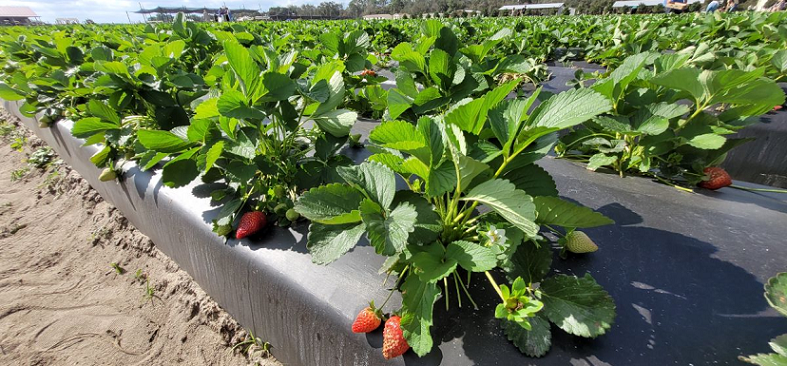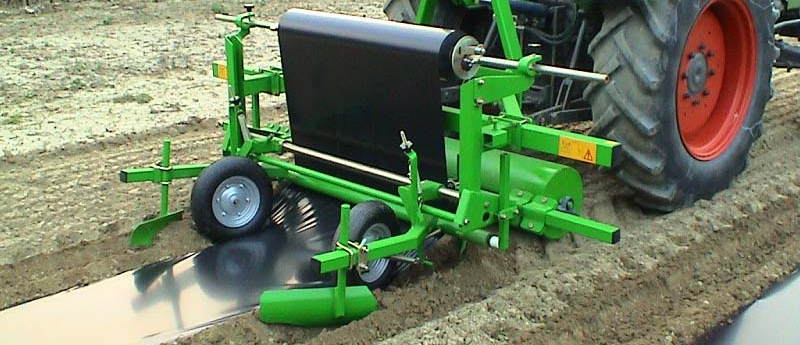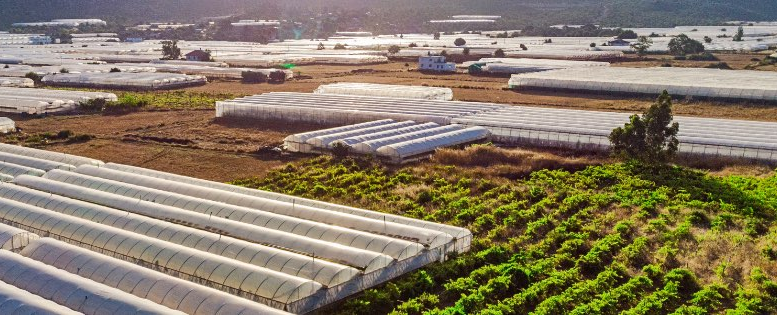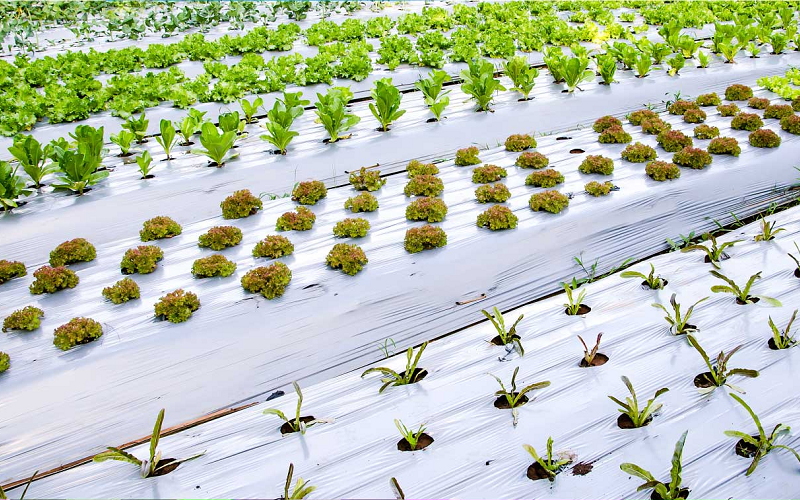Plasticulture refers to the utilization of plastic in farming practices. This encompasses tasks such as soil sterilization, watering, packaging of produce and safeguarding crops from rain. Plastic can also be used as a mulching material or to cover greenhouses. Despite being praised as an effective method for farmers to grow crops using less water, fertilizers and pesticides, its negative impact on the environment has been widely criticized.
What Is Plasticulture?
Plasticulture refers to the integration of plastic materials into various aspects of agriculture. It involves the use of plastic in practices such as soil fumigation, irrigation, packaging of agricultural products, protection of crops from precipitation, and more. Plastic is often used as a mulch or cover for greenhouses, which can help to regulate the temperature and humidity levels inside the structure, promote plant growth and reduce the need for pesticides and other chemicals.
Plasticulture has a number of benefits, such as improving crop yield, reducing water usage, and decreasing the need for pesticides and other chemicals. By creating a controlled environment, farmers can grow crops in a more efficient manner and avoid the risks associated with pests, weeds, and weather. Additionally, plastic mulch and greenhouse covers can help to warm the soil, conserve moisture, and reduce the loss of nitrogen from the soil.

However, plasticulture has also been criticized for its negative impact on the environment. Plastic materials used in agriculture are often non-biodegradable, which means they can persist in the environment for hundreds of years and contribute to plastic pollution. In addition, the production of plastic materials requires significant amounts of energy and other resources, which can contribute to greenhouse gas emissions and other environmental problems.
Despite these concerns, plasticulture continues to be widely used in agriculture due to its many benefits. To minimize the environmental impact, some farmers are exploring alternative materials, such as biodegradable plastics, to reduce the amount of plastic waste produced. Additionally, recycling programs and other initiatives are being developed to help manage the waste generated from plasticulture practices.
Agricultural Applications of Plasticulture
Plasticulture has a wide range of applications in agriculture. One such application is soil fumigation, where plastic covers or tarps are placed over the soil to control soil-borne pests and diseases. Another application is irrigation, where plastic pipes and tubing are used to transport water to crops and distribute it evenly.
Packaging is another area where plastic bags, containers and wraps are used to package and store agricultural products. The protection of crops from precipitation can also be achieved using plastic covers or tarps. Plastic sheets are used as mulch to reduce weed growth, conserve moisture and regulate soil temperature.
Greenhouses can also be covered with plastic sheets to regulate temperature, humidity, and light levels to promote optimal growing conditions. Additionally, plastic sheets or fabrics can be placed over rows of crops as row covers to provide protection from pests, cold temperatures, and frost.
Plastic can also be used to create raised beds that improve soil drainage, reduce soil compaction and provide a warm and stable environment for growing crops. These various applications of plasticulture help farmers to increase crop yields, reduce water usage and improve the efficiency of their operations.

Environmental Impacts of Plasticulture
Plasticulture has various environmental impacts that should not be overlooked. One major impact is plastic pollution, as the non-biodegradable plastic materials used in agriculture persist in the environment for hundreds of years. The production of plastic requires significant amounts of energy and resources, which contributes to greenhouse gas emissions and other environmental problems.
Plastic mulch and other materials used in plasticulture can contain harmful chemicals that can leach into the soil and contaminate it, affecting crop growth. Plastic waste from agriculture can also break down into smaller pieces and make its way into waterways, impacting marine life and habitats.
In addition, plastic can pose a threat to wildlife, including birds and reptiles, that can become entangled in the plastic or mistake it for food. The production and disposal of plastic materials used in plasticulture also require significant amounts of energy, contributing to the depletion of non-renewable energy sources.

Are There Solutions to the Practice of Plasticulture?
Plasticulture, the use of plastic in agricultural activities, has significant environmental impacts, including plastic pollution, greenhouse gas emissions, soil contamination, and biodiversity loss. However, there are solutions to this practice that can help mitigate these impacts.
These solutions range from using biodegradable plastics, reducing plastic use, improving waste management, exploring alternative materials, implementing integrated pest management practices, and raising awareness about the environmental impacts of plasticulture and the alternatives available. In this answer, we will explore some of these solutions in detail. Some of the solutions include:
- Use of biodegradable plastics: This can help reduce the persistence of plastic in the environment and reduce the impacts of plastic pollution.
- Reduction of plastic use: Minimizing the amount of plastic used in agriculture can help reduce the environmental impacts of plasticulture.
- Improved waste management: Properly managing plastic waste from agriculture can help prevent it from ending up in the environment and minimize the impacts of plastic pollution.
- Alternative materials: Exploring alternative materials for use in agriculture, such as natural fibers, paper, or compostable plastics, can help reduce the environmental impacts of plasticulture.
- Integrated pest management: Implementing integrated pest management practices, such as the use of cover crops, intercropping, and other sustainable agriculture practices, can reduce the need for plastic mulch and other plastic materials in agriculture.
- Education and Awareness: Raising awareness among farmers, consumers, and the general public about the environmental impacts of plasticulture and the alternatives available can encourage more sustainable practices in agriculture.
The Future of Plasticulture
The future of plasticulture is likely to be influenced by a combination of factors, including the development of new technologies, changing regulations, and shifting consumer attitudes.
- Technological developments: In the future, advancements in technology may lead to the development of new, more sustainable plastic materials or alternative materials for use in agriculture. This could reduce the environmental impacts of plasticulture.
- Regulation: Governments around the world are beginning to take action to reduce plastic pollution and promote more sustainable practices in agriculture. This could lead to changes in regulations regarding the use of plastic in agriculture and encourage more sustainable alternatives.
- Consumer attitudes: Consumer attitudes towards the environmental impacts of plasticulture are also likely to play a role in shaping its future. As consumers become more conscious of their environmental impact, they may demand more sustainable and environmentally-friendly products, including those produced using more sustainable agricultural practices.
Overall, the future of plasticulture will depend on a number of complex and interconnected factors, including technological advancements, government regulations, and consumer attitudes. However, it is clear that continued efforts to reduce the environmental impacts of plasticulture and promote more sustainable practices in agriculture will be important in shaping its future.

